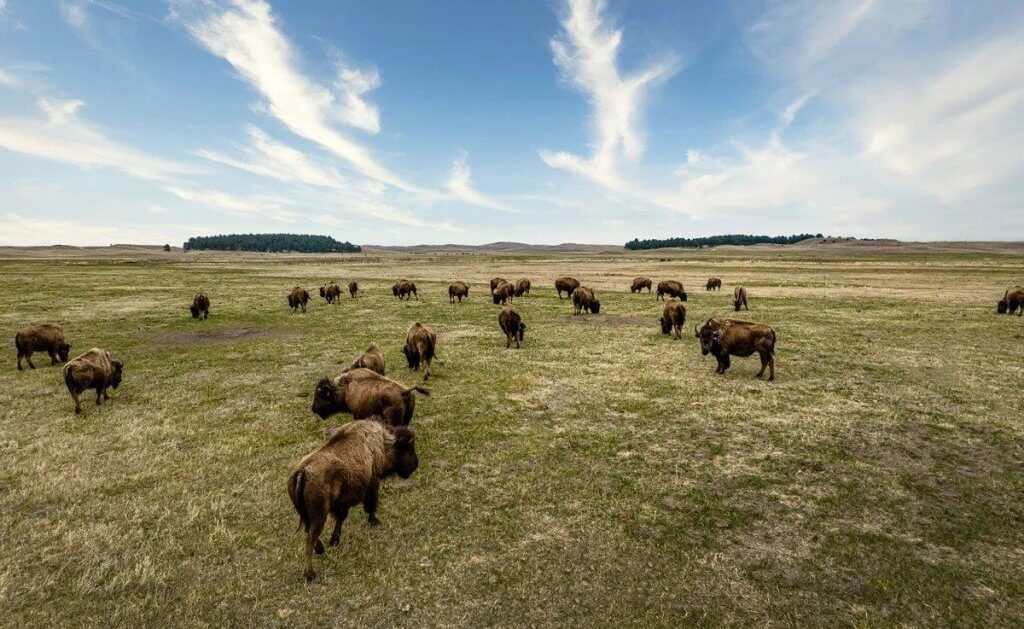(From the Daily Yonder--serving rural news, Kristi Eaton March 17, 2022)
The Wolakota project currently has about 750 buffalo in the herd, according to Aaron Epps, the manager for the project. (Photo by Zachary Straw, Straw Photography)
Over the past two years, the Sicangu Oyate, also known as the Rosebud Sioux Tribe, has cultivated the largest Native-managed buffalo herd in the world.
There are currently about 750 buffalo in the herd, according to Aaron Epps, who was the start-up manager for the project, known as Wolakota. He is also the marketing and communications director for REDCO, the economic development arm of the tribal nation, headquartered in South Dakota.
“It’s an idea that’s been around, really, for generations, just due to the historical connection and spiritual and cultural significance of buffalo to the Lakota people,” Epps said in an interview with The Daily Yonder. “And so, the idea isn’t necessarily new, but we had a really unique opportunity to really actualize it and bring it about in a really unique way.”
According to experts and historians, more than 30 million bison once roamed North America. As a source of meat and hides in the United States, bison formed the basis of the economy for numerous Plains Indian societies.
In the late 19th century, the U.S. government encouraged mass hunting of bison in an organized effort to destroy the livelihood of Plains Indians. By the late 1800s, fewer than 1,000 bison were left and all Plains Indians were forced onto reservations.
The first buffalo arrived to the Rosebud Sioux Tribe in October of 2020 from Badlands National Park, Epps said. There was also a donation from Wind Cave National Park. In 2021, there was another round of donations, from federal partners and wildlife refuges as well as some purchased from a private ranch.
The project is much more than economic, he said.
“We’re managing the land for ecological outputs and soil health,” Epps said. “And also, we’ve been able to provide food through some traditional harvests to both students as well as to families in need. And then just the ability to have skill-share, like traditional harvests, where cultural experts will come in and teach how to use each part of the buffalo and how to break it down.”
For this coming year, Epps and others hope to cultivate community engagement. They have had students from an immersion school visit the site and would like to create more opportunities for community engagement.
Additionally, they are committed to treating the animals with the cultural connection at the forefront, including humane harvesting and prayer. They hope to work with restaurants and grocery stores to get the meat into them and then subsidize the meat distribution to the local community, Epps said.
In January, a study was published in Frontiers in Ecology and Evolution that found restoration of bison to tribal lands throughout the Northern Great Plains can help restore the prairie ecosystem while improving the long-running issue of food insecurity and food sovereignty for Native communities. It may also help to mitigate adverse impacts to traditional agricultural systems due to climate change.
“The buffalo is important to Indian communities, to our people culturally and ecologically to our lands,” said Ervin Carlson, president of the InterTribal Buffalo Council and Blackfeet buffalo manager, in a press statement. “We know bringing them back will not only heal our people but also help us with the changes we see on our grasslands due to drought.”
(The Yonder Report highlights the vibrant, resilient spirit of living and working in rural America.)

Francie M Berg
Author of the Buffalo Tales &Trails blog


